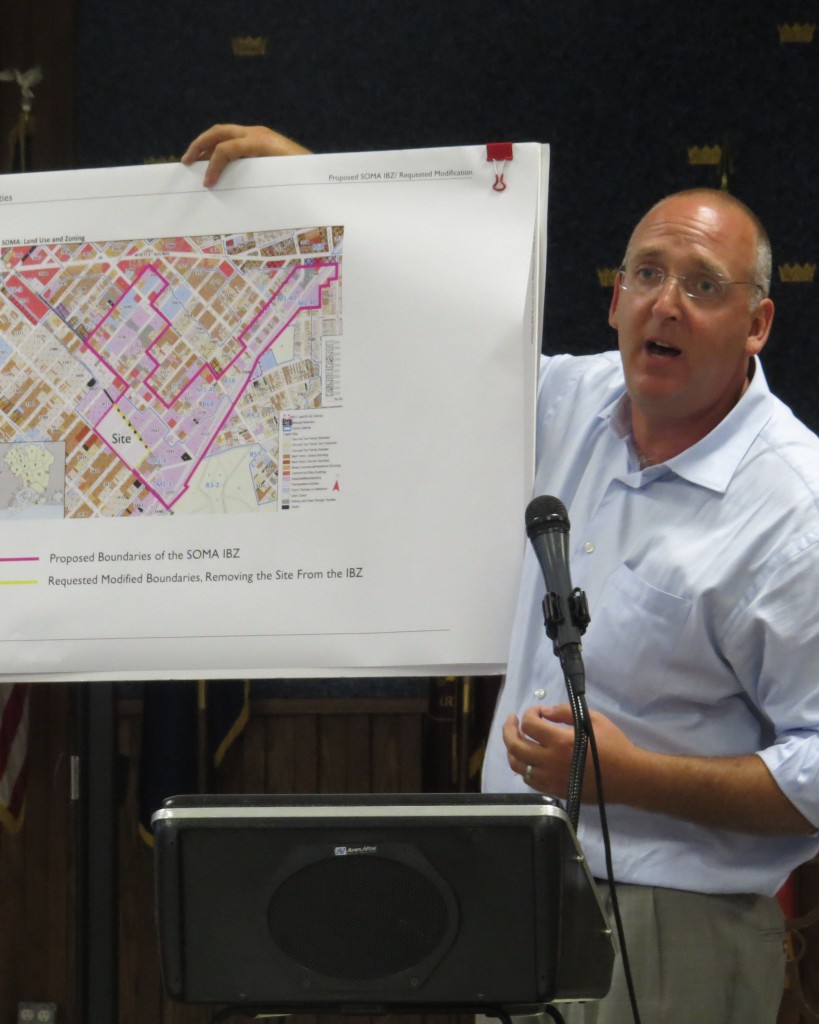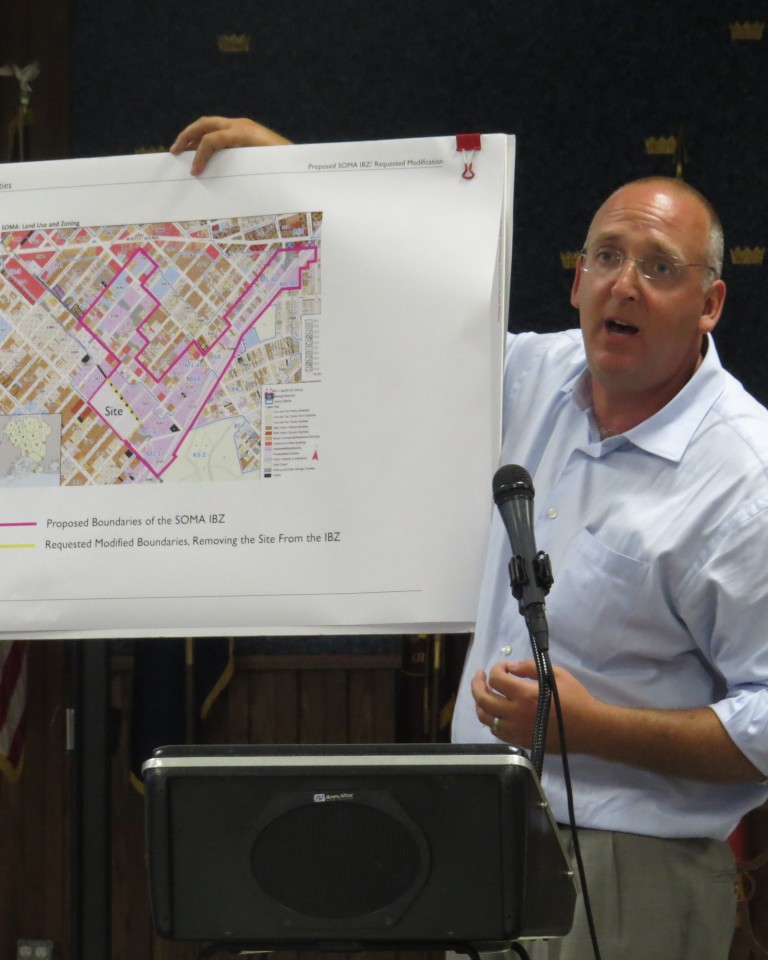Made in the USA.
It is those words that prompted Community Board 5 members to throw their overwhelming support behind a plan to revive the manufacturing industry that once reigned supreme in Ridgewood, saying they hope they will see the phrase emblazoned on goods sold throughout a country that some are saying is on the verge of a manufacturing renaissance.
“We have an opportunity to bring jobs to this area,” Ted Renz, a CB 5 member and executive director of the Ridgewood Local Development Corporation, said in reference to the board’s vote at its meeting last Thursday to support creating an “industrial business zone.”

Eric Palatnik, an attorney representing business owners on Irving Avenue, said he his clients did not support creating an industrial business zone in Ridgewood. Anna Gustafson/The Forum Newsgroup
Originally proposed by the Ridgewood LDC and which must be given a stamp of approval from the city before being implemented, the zone would provide tax credits and other assistance for businesses that set up shop in a portion of Ridgewood. It would be located in the area known as “SOMA” – South of Myrtle Avenue – and would be bordered by Cypress Avenue in the north, Irving Avenue to the south, Hancock Street in the west, and the New York Connecting Railroad Bay Ridge Freight Line to the east. The IBZ would also include Ridgewood and Glendale properties along the freight line from Irving Avenue to Myrtle Avenue.
The city first launched the IBZ program in 2006, creating 16 such zones throughout the five boroughs, including in Maspeth, Jamaica, Astoria and Long Island City, in an attempt to lure industrial and manufacturing businesses back to the area – which, like the rest of the country, experienced a mass exodus of such jobs in the 1990s as companies were drawn overseas by cheaper labor and production costs. As part of the program, companies that relocate to the area receive a $1,000 tax credit per employee, up to 100 workers.
The move, many CB 5 members said, is meant to rejuvenate an area that once had hundreds of knitting mills and textile factories lining its streets – places that made supplies for those fighting in World War II and as much as one-quarter of the sweaters purchased in the United States.
And while CB 5 District Manager Gary Giordano said it’s unlikely those kinds of factories would return to Ridgewood, he and others from the board expect a number of smaller venues to open in the expansive factory buildings – like architects and design firms, for example.
Jean Tanler, coordinator of the Maspeth Industrial Business Zone, called the IBZ a Business Improvement District “on steroids,” stressing that small businesses throughout the city have been able to not only set up shop, but remain in the area, because of the help they land through the program.
Not everyone is happy with the likelihood that the area will become an IBZ, however.
Eric Palatnik, an attorney who represents some of the property owners on Irving Avenue, pleaded with the board before its vote to reject the IBZ and said his clients have had no luck finding industrial or manufacturing tenants.
“If you look at business zones in Brooklyn, they bring garbage, noise and hotels,” Palatnik said at last week’s meeting.
Stephanie Eisenberg said at the CB 5 meeting that the IBZ designation in Williamsburg has spurred raucous businesses, such as a 700-person cabaret.
“People drive home drunk; they walk through the neighborhood and hoot and holler – nobody’s sleeping around there,” Eisenberg said.
But CB 5 Chairman Vincent Arcuri emphasized that, because of the current zoning, people are already able to open those kinds of establishments – but it hasn’t happened.
A number of board members, as well as Giordano, have also stressed that the creation of an IBZ could not only play a vital role in lifting a local economy – but is also representative of the beginning of a country-wide manufacturing renaissance. U.S. firms that have operated in other countries for much of recent history – including General Electric and Ford – have recently said they plan to return some of their manufacturing operations to the U.S.
While the U.S. has hemorrhaged factory jobs – losing 6 million of them between 2000 and 2009, according to the federal Bureau of Labor Statistics – manufacturing positions opening in the country is on the rise. According to federal statistics, the U.S. has added 520,000 manufacturing jobs since January 2010 – and most of those are coming from firms based in this country.
Much of this has to do with what drove the companies away from their homeland to begin with – costs. The price of shipping is becoming increasingly expensive, and there’s a narrowing wage gap between the U.S. and countries that many businesses have flocked to, such as China or India.
Now, CB 5 members said, it’s time to wait and see what businesses emerge in the old, empty factory buildings now adorned with telephone numbers from the Great Depression and “For Rent” signs. And, perhaps, someday, it will be in Ridgewood’s buildings that people will once again churn out the goods emblazoned with “Made in the USA” – goods that are representative of jobs that secure individuals careers in a place many no longer know – the middle class.
By Anna Gustafson

